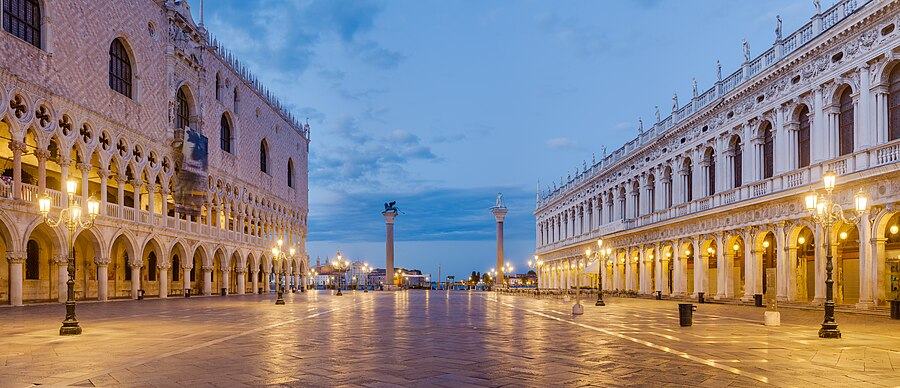Who would check
every detail of the Palace of the Doge in
The Palace was
built in the 12th century. The concept is atypical, displaying a smooth
wall with a geometric pattern of white and pink stone, which rests upon two
levels of colonnades. At ground level this is an arched white stone colonnade;
on the first floor, it is a loggia enhanced with quatrefoil openings in white
Istrian stone. The top of the Palace is crowned with white lace stonework merlons as seen in Persepolis and
The capitals on top of the columns are all different and have many stories to tell. They serve not only as decorations but also as examples of historical, moral, and political teaching. We will recognize biblical scenes, Christian virtues, medieval symbolism, the Twelve Signs of the Zodiac, aspects of everyday life, and people of the world.
It is in this last group that Alexander the Great pops up with the inscription ALEXANDER MACEDONIAE REX as one of the Kings of the World. He is to be found on top of the fifth column counting from the Ponte della Paglia. The picture from Engramma is not the best but is the only one available. It will have to do…


No comments:
Post a Comment